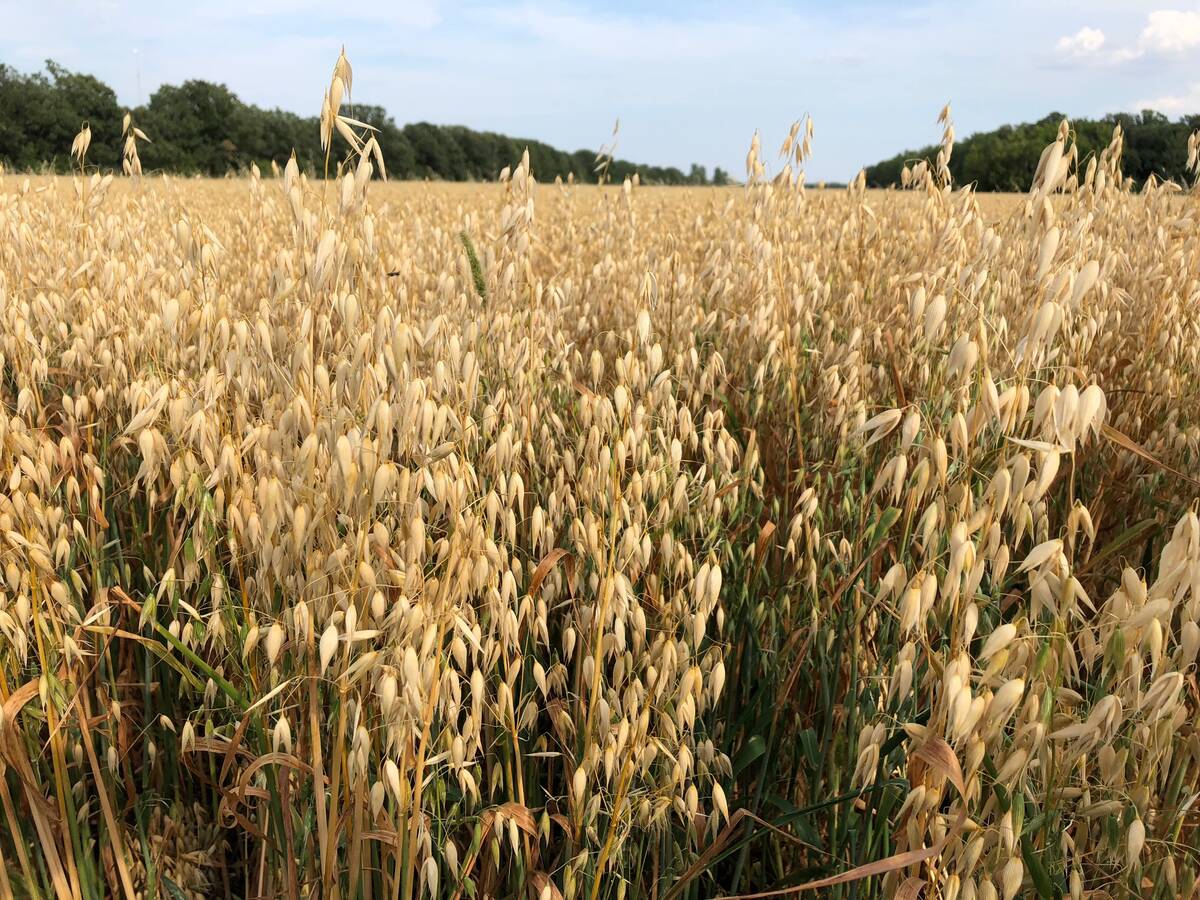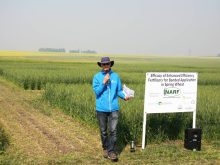Project compares perennial ryegrass monocrop and oat monocrop to oat companion crops with perennial ryegrass
Perennial ryegrass seed production has many agronomic benefits for Canadian farms and a companion crop can help get the grass established.
“It’s used in a lot of lawn and turf mixes so there is a demand for the seed,” said Lana Shaw, research manager of the South East Research Farm in Redvers, Sask.
Speaking during a virtual AgriARM research update on Jan. 13, Shaw said perennial ryegrass provides a break in the crop rotation that can reduce disease and weed pressures.
However, establishing a perennial crop can be tricky, so Shaw has been studying the economic outcome for a perennial ryegrass monocrop and oat monocrop versus various oat companion crops with perennial ryegrass.
Read Also

Controversy fails to prevent PGR use in oats
Some Manitoba oat growers are still using chlormequat chloride — the active ingredient in Manipulator —and sometimes to measurable success.
Three locations were used in the study, the Southeast Research Farm, Conservation Learning Centre and the Northeast Agricultural Research Foundation.
The trials used four oat seeding rates with the 1X rate of 300 seeds per sq. metre, and there was a 0.25X, 0.5X and 0.75X, as well as a monocrop perennial ryegrass and monocrop oat treatment.
There were also two oat seed placements; in the same row as the perennial ryegrass seed and a sideband.
The first year of the two-year study has been completed.
Shaw said the stubble of a companion cereal crop can trap snow, which can help the perennial ryegrass seedlings survive harsh winter conditions and from sandblasting in the fall and spring.
Companion crops also suppress weeds when establishing perennial forages, but it’s important to give the perennial enough space to avoid smothering it.
The first observations of the various treatments in the study were conducted June 21, when measurements were unable to find a difference in the perennial ryegrass establishment.
“It’s actually quite hard to count the perennial ryegrass in the spring because they just looked like tiny little green hairs. And when they’re growing with the oat, it’s not an easy job to differentiate them and count them properly.”
She said this first observation was carried out early, because moisture deficits or shading from the oats was not yet an issue.
By fall, differences between the treatments for perennial ryegrass establishment were visually apparent at the Redvers site.
“Where the oats were seeded with the perennial ryegrass, the perennial ryegrass was not doing as well. It was hard to even see it in those rows,” Shaw said.
She said there was more perennial ryegrass growth in the monocrop tests, but there was also more wild oat and millet weeds on the plots.
At the Conservation Learning Centre, the plot had to be reseeded toward the end of June. It was a bad growing year due to the drought, but there was no significant difference between side-banded and seed-row-placed treatments.
There was also no significant difference between oat seeding densities at the South East Research Farm.
“The low-density oats just tillered a lot more. They were late, but they still ended up being similar yields,” Shaw said.
“That doesn’t mean that you should seed oats in really low densities. It did cause problems with trying to time harvest because of these late tillers.”
She said there was also no significant yield penalty compared to the monocrop oats.
“It didn’t really cost us yield this year, having the perennial ryegrass seeded under it, and that’s very interesting and promising. I don’t know how repeatable it is, but it’s interesting,” Shaw said.
Next year, the oat monocrop treatment will again be seeded to oats, and the survival rate of the perennial ryegrass will be assessed.
The treatments will get a nitrogen fertilizer broadcast in the spring based on soil tests from last fall.
“We’re going to be looking for the seed yield for perennial ryegrass and oats, and then the quality of the seed for perennial ryegrass and oats. So, they’ll be checking the germination and various quality parameters, and then there’s going to be an economic assessment.”
















